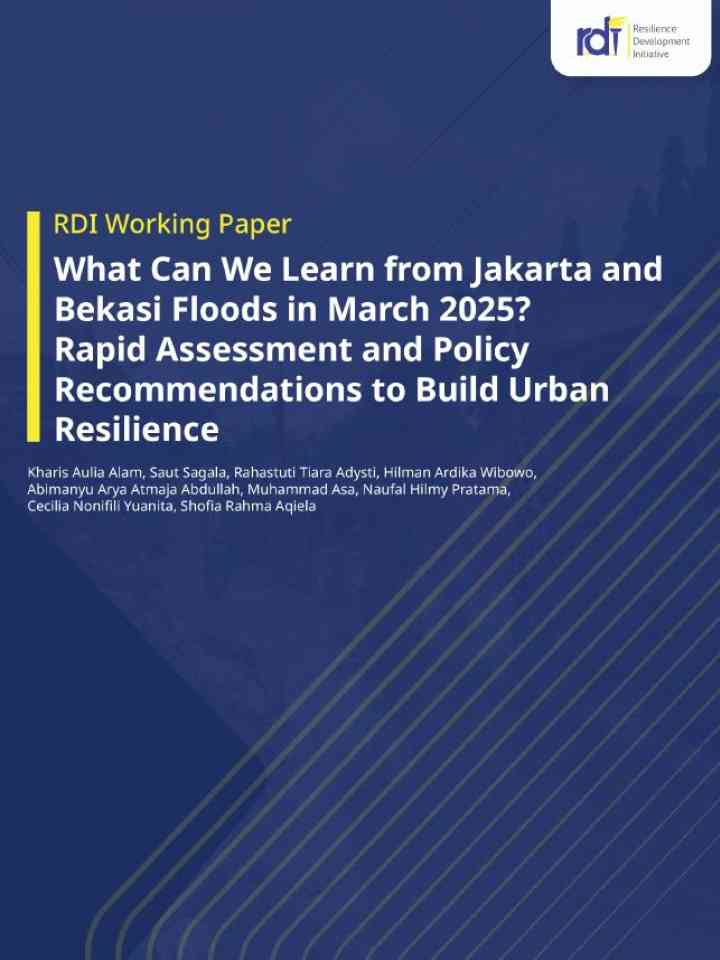What can we learn from Jakarta and Bekasi floods in March 2025? Rapid assessment and policy recommendations to build urban resilience
This working paper was developed in response to the March 2025 Jabodetabek flood to document its impacts and provide insights for strengthening urban resilience. It is part of a broader effort to bridge knowledge gaps, inform policy discussions, and support decision-making processes aimed at building more resilient urban communities.
Widespread flooding across Jakarta, Bogor, Depok, Tangerang, and Bekasi (Jabodetabek) area, Indonesia, with water depths of 15–300 cm, remained as of March 5, 2025. Extreme rainfall in Bogor on March 2, 2025 triggered the flooding due to river overflows in Ciliwung, Cikeas, and Pesanggrahan. The failure of the 3-metre flood barrier in this area exemplifies the inadequacy of existing flood defences. The flood has affected more than 120,600 people in six cities/regencies. Annual economic losses from floods in the region are estimated to reach approximately IDR 5 trillion or USD 300 million. The 2025 flood also revealed critical deficiencies in governance and disaster preparedness. The emergence of the Jabodetabek Flood in 2025 is not merely caused by the intensity of the rainfall but also due to inadequate flood management in the area. In line with the Build Back Better (BBB) approach, rehabilitation and reconstruction efforts during the post-disaster phase should prioritise long-term resilience.
Explore further
